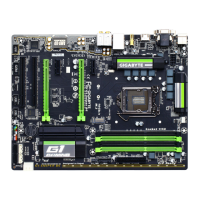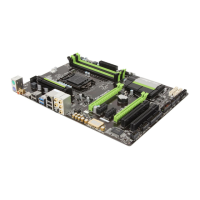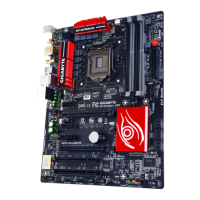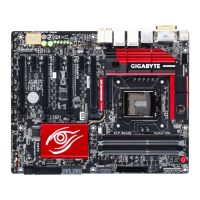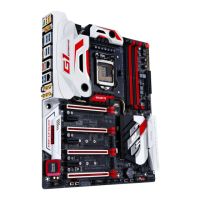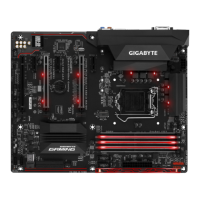Appendix - 86 -
Step 2:
Select the new hard drive to add into the array to be rebuilt and press <Enter>. The following screen appears,
indicating that an automatic rebuild will be performed after you enter the operating system (look for the Intel
Rapid Storage Technology icon in the notication area, which will show that a RAID volume is being rebuilt).
If you do not enable automatic rebuild on this stage, you have to manually rebuild the array in the operating
system (see the next page for more details).
Intel(R) Rapid Storage Technology - Option ROM - 11.0.0.1339
Copyright(C) 2003-11 Intel Corporation. All Rights Reserved.
RAID Volumes :
ID Name Level Strip Size Status Bootable
0 Volume0 RAID1(Mirror) N/A 111.7GB Rebuild Yes
Physical Devices :
ID Devices Model Serial # Size Type/Status(Vol ID)
0 ST3120026AS 3JT354CP 111.7GB Member Disk (0)
1 WDC WD800JD-22LS WD-WMAM9W736333 111.7GB Member Disk (0)
[
hi
]-Select [ESC]-Exit [ENTER]-Select Menu
[ DISK/VOLUME INFORMATION ]
Volumes with "Rebuild" status will be rebuilt within the operating system.
[ MAIN MENU ]
4. Recovery Volume Options
5. Acceleration Options
6. Exit
1. Create RAID Volume
2. Delete RAID Volume
3. Reset Disks to Non-RAID
Performing the Rebuild in the Operating System •
While in the operating system, make sure the chipset driver has been installed from the motherboard driver disk.
Then launch the Intel Rapid Storage Technology utility from All Programs in the Start menu.
Step 1:
Go to the Manage menu and click Rebuild to
another disk in Manage Volume.
The Status item on the left of the screen displays
the rebuild progress.
Step 2:
Select a new drive to rebuild the RAID and click
Rebuild.
Step 3:
After the RAID 1 volume rebuilding, the Status will
display as Normal.

